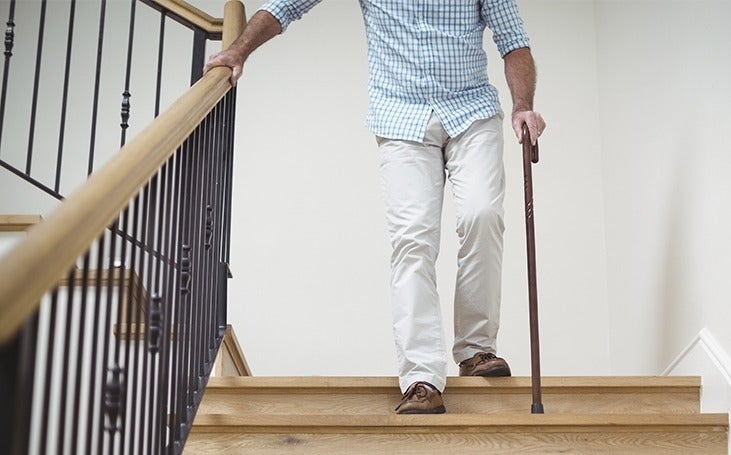Heel Your Pain: Common Causes and Solutions for Heel Pain

Do you suffer from heel pain? If so, you’re not alone. Heel pain affects nearly two million Americans each year. Age is a significant factor in the development of heel pain but by identifying the symptoms early and engaging in some simple remedies, you can help prevent the development of heel pain.
Plantar fasciitis
Plantar fasciitis (pronounced “plantar fash-eee-eye-tiss”) is the most common cause of heel pain and occurs when the ligament on the bottom of the foot stretches irregularly and develops small tears, causing the ligament to become inflamed. If not treated, plantar fasciitis can cause constant heel pain while standing or walking.
Plantar fasciitis usually develops gradually with pain often only occurring during the first few steps after getting out of bed in the morning or after sitting for an extended period of time. As the tissue warms up, pain often decreases but can return again after standing, physical activity, or sitting for a long time. In addition to age, other factors that can cause plantar fasciitis include:
- Obesity or sudden weight gain
- Certain types of arthritis
- Diabetes
- Wearing shoes with poor cushioning
- Prolonged standing on hard surfaces
- Tightness in the Achilles tendon
Plantar fasciitis treatment
Treatment without surgery can often be successful in relieving inflammation and pain especially if started at the earliest sign of heel pain. Conservative treatments can often be effective in stopping pain and reversing damage. Treatments include:
- Stretching or massaging the calf muscle
- Purchasing better-fitting shoes (with a raised heel and arch support)
- Losing weight
- Icing the sore heel
If you are experiencing heel pain and think you might have plantar fasciitis, talk with your doctor about the best treatment options available to you.
Heel spurs
Another common cause of heel pain is heel spurs. A heel spur is a pointed bone fragment that forms on the heel bone and can often develop in conjunction with plantar fasciitis.
Similar to plantar fasciitis, heel spur pain is most noticeable when walking after periods of rest. Pain can diminish as you walk but prolonged activity can cause pain to return.
Preventing heel spurs
Proper footwear is important. Old or ill fitting shoes do not absorb pressure or provide necessary support. Consider orthotic shoe inserts as an effective way to stretch the plantar fascia ligament and prevent conditions such as heel spurs. Stretching the foot and calf muscle to make the tissue stronger and more flexible is also effective in preventing damage.
If you think you may have a heel spur, talk with your doctor about the best treatment options available to you. Often, heel spurs can be effectively treated with conservative treatment methods.
Keep up with the latest health and wellness updates
Not a Tufts Health Plan member but want more health and wellness articles, and other important health updates? Sign up to receive them directly to your inbox here.
Resources & Tools
Drug Search
Use the drug search tools to find out if your drugs are covered and which tier they fall under on your plan type.
Find a Doctor
Find a doctor within your Tufts Health Plan Medicare Preferred HMO network or your Tufts Health Plan Senior Care Options network.
Health Library A-Z
Tufts Health Plan has partnered with Healthwise to provide members with access to a library of high-quality content on conditions, treatments and more.